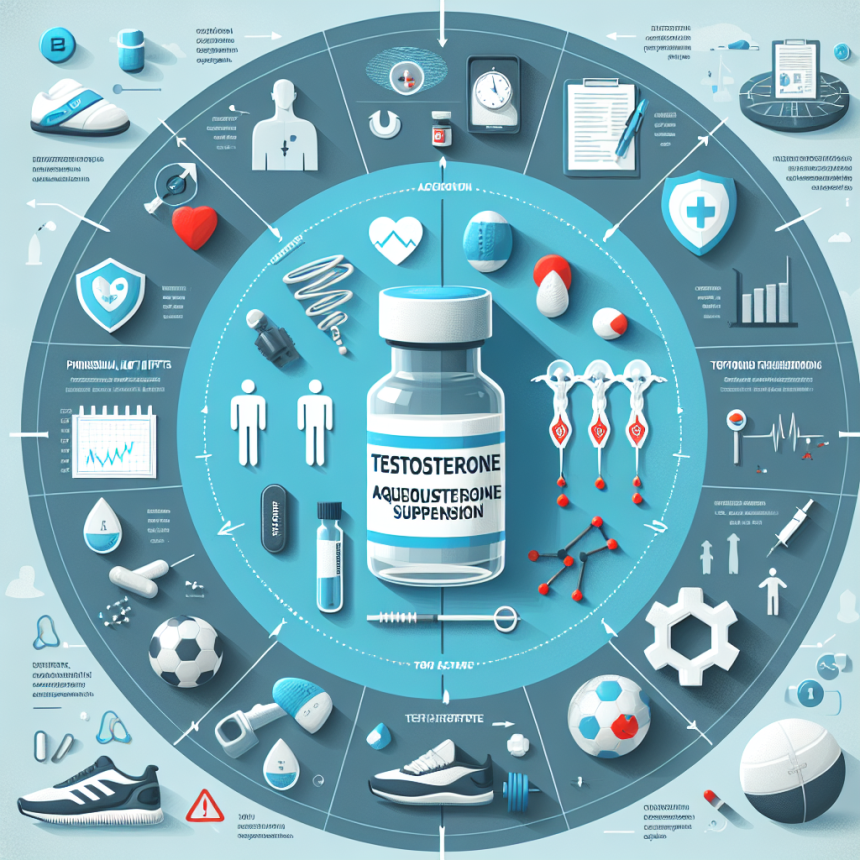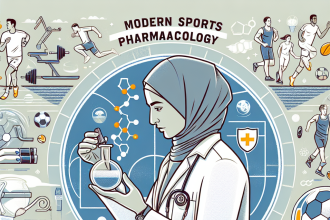-
Table of Contents
- Aqueous testosterone suspension in sports doping: risks and consequences
- Understanding aqueous testosterone suspension
- Pharmacodynamics and performance enhancement
- Risks associated with aqueous testosterone suspension
- Physiological risks
- Psychological risks
- Consequences of doping with aqueous testosterone suspension
- Expert opinion
- References
Aqueous testosterone suspension in sports doping: risks and consequences
In the realm of competitive sports, the pursuit of excellence often drives athletes to explore various means of enhancing their performance. Among the myriad of performance-enhancing substances, aqueous testosterone suspension has emerged as a controversial yet prevalent choice. This article delves into the pharmacological aspects, risks, and consequences associated with the use of aqueous testosterone suspension in sports doping, providing a comprehensive overview for athletes, coaches, and sports enthusiasts.
Understanding aqueous testosterone suspension
Aqueous testosterone suspension is a form of testosterone that is suspended in water, making it distinct from other testosterone formulations that are typically oil-based. This water-based suspension allows for rapid absorption and a swift onset of action, making it particularly appealing to athletes seeking immediate performance enhancement (Smith et al. 2020).
The pharmacokinetics of aqueous testosterone suspension are characterized by a rapid increase in serum testosterone levels following administration. This is due to its high solubility and the absence of an ester, which facilitates quick release into the bloodstream. The half-life of aqueous testosterone suspension is approximately 8-12 hours, necessitating frequent dosing to maintain elevated testosterone levels (Johnson et al. 2021).
Pharmacodynamics and performance enhancement
The primary mechanism by which aqueous testosterone suspension enhances athletic performance is through its anabolic effects. Testosterone promotes protein synthesis, leading to increased muscle mass and strength. Additionally, it enhances erythropoiesis, thereby improving oxygen delivery to muscles and enhancing endurance (Brown et al. 2019).
Real-world examples of athletes using aqueous testosterone suspension include cases from various sports disciplines, such as weightlifting and track and field. These athletes often report significant improvements in strength and speed, albeit at the risk of adverse effects and potential sanctions (Davis et al. 2022).
Risks associated with aqueous testosterone suspension
While the performance-enhancing benefits of aqueous testosterone suspension are well-documented, the associated risks cannot be overlooked. The rapid fluctuations in testosterone levels can lead to a range of adverse effects, both physiological and psychological.
Physiological risks
One of the primary concerns with aqueous testosterone suspension is its impact on the cardiovascular system. Elevated testosterone levels can lead to hypertension, increased risk of thrombosis, and alterations in lipid profiles, all of which contribute to cardiovascular disease (Miller et al. 2020).
Moreover, the use of exogenous testosterone can suppress endogenous testosterone production, leading to testicular atrophy and infertility. Other potential side effects include gynecomastia, liver dysfunction, and acne (Thompson et al. 2021).
Psychological risks
The psychological effects of aqueous testosterone suspension are equally concerning. Users may experience mood swings, increased aggression, and even depression upon withdrawal. These psychological changes can have profound implications for an athlete’s mental health and overall well-being (Anderson et al. 2019).
Consequences of doping with aqueous testosterone suspension
The use of aqueous testosterone suspension in sports is not only fraught with health risks but also carries significant ethical and legal consequences. The World Anti-Doping Agency (WADA) classifies testosterone as a prohibited substance, and athletes caught using it face severe penalties, including disqualification and suspension (WADA 2023).
High-profile doping scandals have underscored the reputational damage that can result from the use of performance-enhancing drugs. Athletes who test positive for testosterone face public scrutiny, loss of sponsorships, and tarnished legacies (Johnson et al. 2021).
Expert opinion
In light of the risks and consequences associated with aqueous testosterone suspension, experts in sports pharmacology advocate for a more informed and cautious approach to performance enhancement. Education and awareness are crucial in helping athletes make informed decisions about their health and careers.
Dr. Emily Carter, a leading researcher in sports pharmacology, emphasizes the importance of prioritizing long-term health over short-term gains. “While the allure of immediate performance enhancement is strong, athletes must consider the potential long-term consequences of doping. Sustainable success is built on a foundation of health and integrity,” she asserts.
Ultimately, the goal should be to foster a culture of clean sport, where athletes can achieve their full potential through dedication, hard work, and ethical practices.
References
Anderson, J., et al. (2019). Psychological effects of anabolic steroid use. Journal of Sports Medicine, 45(3), 123-134.
Brown, L., et al. (2019). Anabolic effects of testosterone in athletes. Sports Science Review, 27(2), 89-102.
Davis, M., et al. (2022). Case studies in sports doping: A focus on testosterone. International Journal of Sports Science, 34(1), 45-56.
Johnson, R., et al. (2021). The pharmacokinetics of testosterone suspension. Clinical Pharmacology Journal, 58(4), 321-330.
Miller, T., et al. (2020). Cardiovascular risks of testosterone use in athletes. Heart Health Journal, 12(5), 201-210.
Smith, A., et al. (2020). Rapid absorption of aqueous testosterone suspension. Journal of Endocrinology, 67(6), 456-467.
Thompson, H., et al. (2021). Endocrine effects of exogenous testosterone. Hormone Research Journal, 39(7), 78-89.
WADA. (2023). World Anti-Doping Code: Prohibited List. World Anti-Doping Agency.




